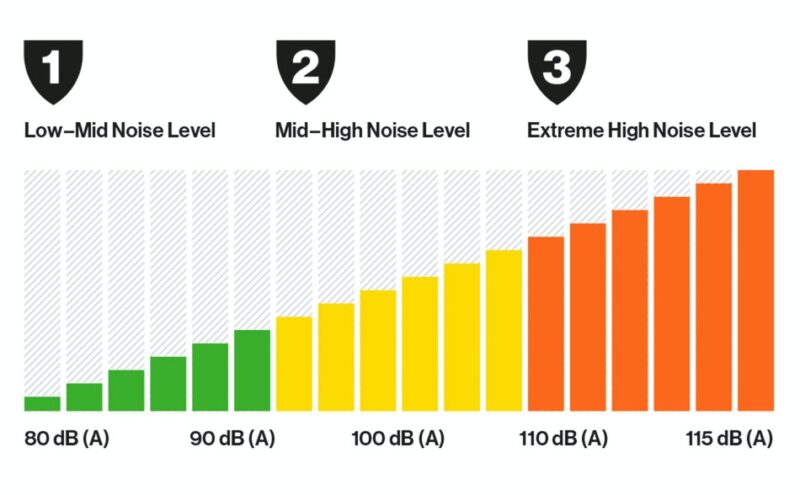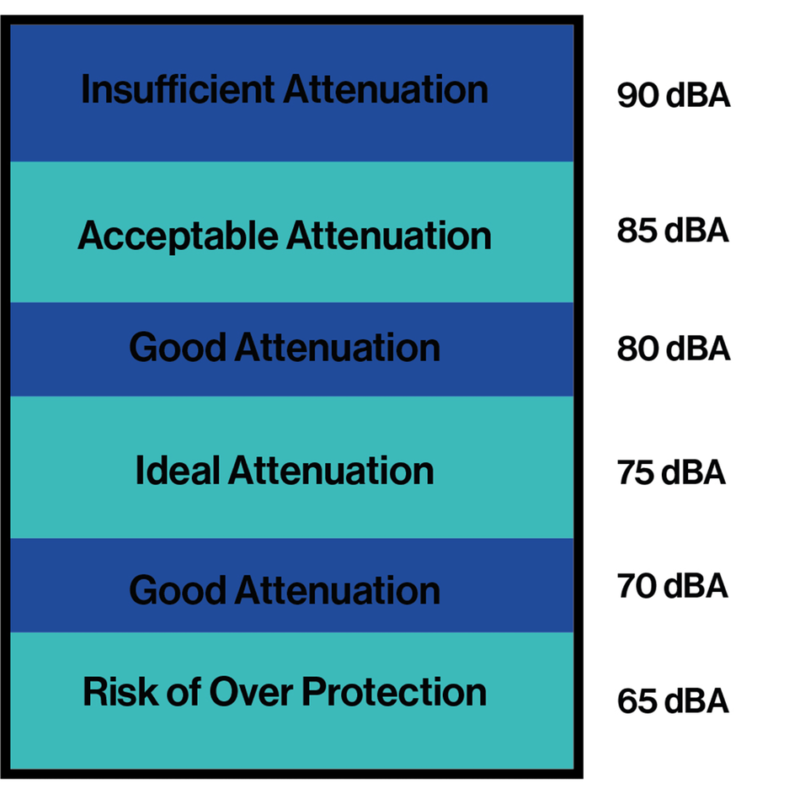For optimal safety and performance, it is important to select the hearing protection that best suits your needs. The nature and noise level of your work environment are the most important factors. You need to determine the noise levels you are exposed to, and whether you need to be aware of other sounds, such as warning signals.
If you need to wear a helmet or other headgear, this will also affect your choice. Features such as Bluetooth and active listening can improve both your efficiency and your enjoyment at work.
Determining Your Noise Level
To get the best protection, you need to determine the noise levels you are exposed to. For some machines and power tools, dB levels can be found in the user manual or stated on a label on the machine. For example, if you use a chainsaw with the level 105 dB (A), the recommended level under the earcup should be around 75 dB (A). That means you need a hearing protector with an attenuation of around SNR 30 dB.
Electronic Features
Sometimes, all you need is passive hearing protectors. However, if you need to use hearing protection for long periods of time, features such as Bluetooth and AM/FM radio will make your working days a great deal more comfortable, efficient and fun.
Some environments place greater demands on your protection. If it is important to hear warning signals or be able to communicate with others in noisy environments, we highly recommend choosing an electronic hearing protector with the active listening feature, and, depending on your needs, two-way communication. Level dependent active listening protectors allow situational awareness while protecting against impulsive or intermittent hazardous noise. A noise cancelling speech microphone is also very useful in these circumstances.
How to Select Your Protection Level
To keep you and your hearing as safe as possible, you need to choose a protection level that is neither too high nor too low. These check lists will help you make your choice:
When to consider selecting a lower protection level
The exposure time is shorter than 4 hours. The protection level is based on noise exposure over an eight-hour working day. If the exposure is shorter you should consider selecting a lower protection level.
You need to hear important information (from colleagues, warning signals etc). Consider selecting a lower protection level or use a level dependent protector.
If you suffer from a hearing loss. With a hearing impair ment you may already have difficulty understanding speech in noisy environment. If you select the highest attenuation for hearing protectors, you may find it even more difficult to communicate or hear warning signals.
When to consider selecting a higher protection level
If the noise consists of mainly low frequency noise, as the low frequency noise is more difficult to block out.
If you need to wear other head protection such as safety glasses or face masks. When combining hearing protection with this type of equipment, ensure that performance is not adversely affected.
If there are any other noise sources nearby.
If you are uncertain, seek additional advice and guidance or select a protector with a slightly higher protection level.
Not sure which product is best for you?
If you are uncertain, seek additional advice and guidance from one of our experts. We’ll make sure you get the right protection.
This article has been reposted from hellbergsafety.com
Back to blog





